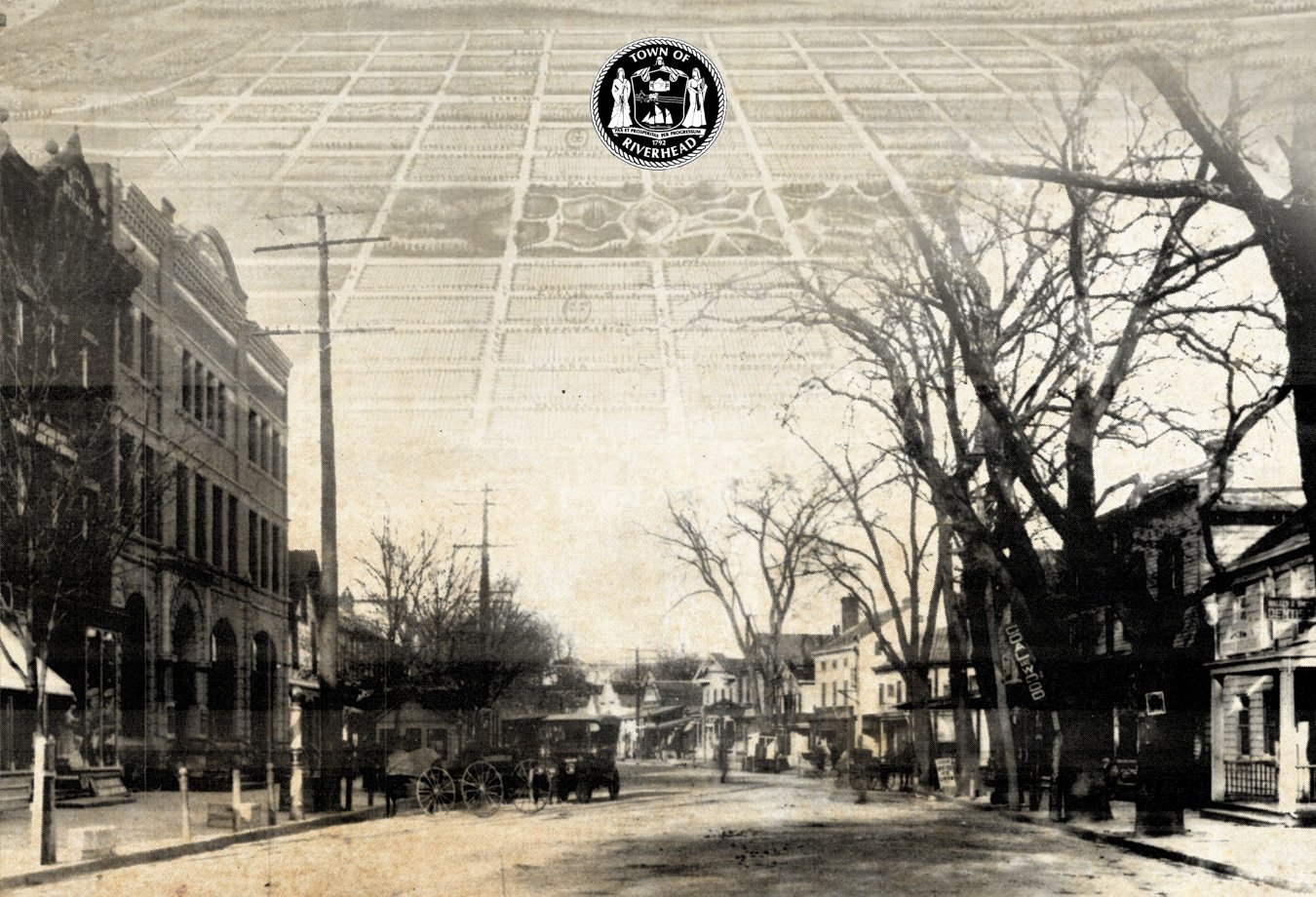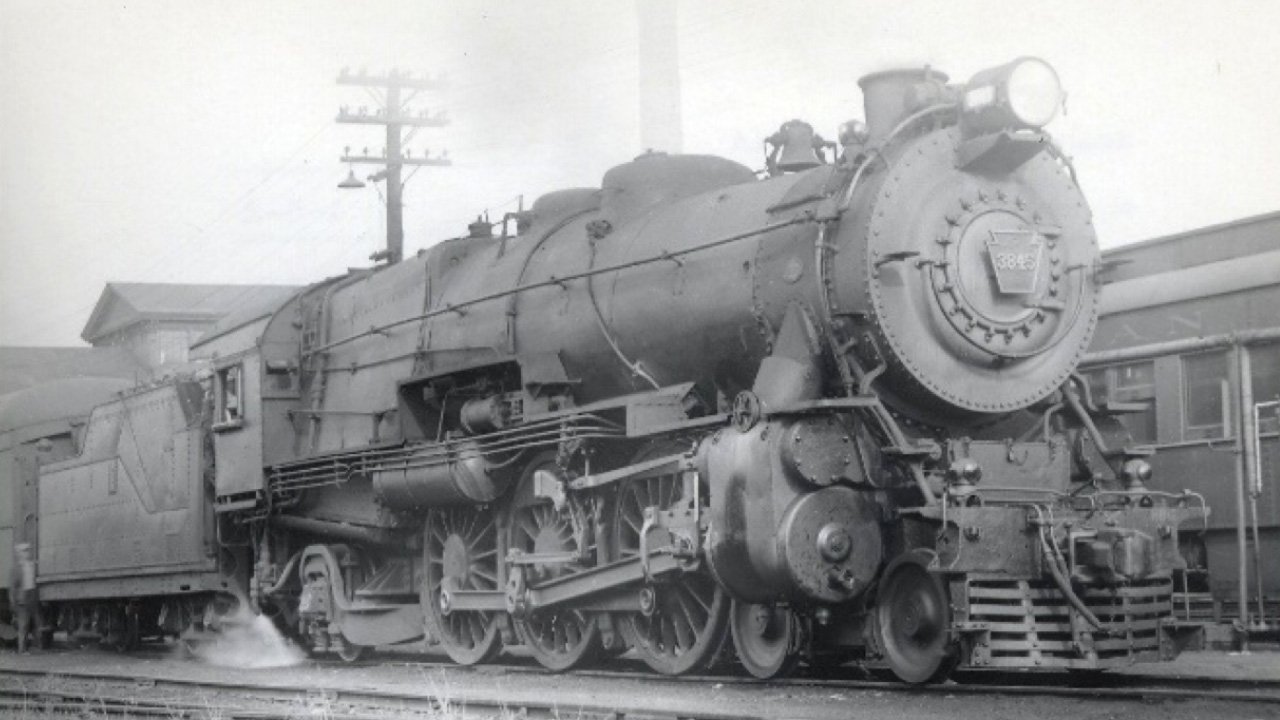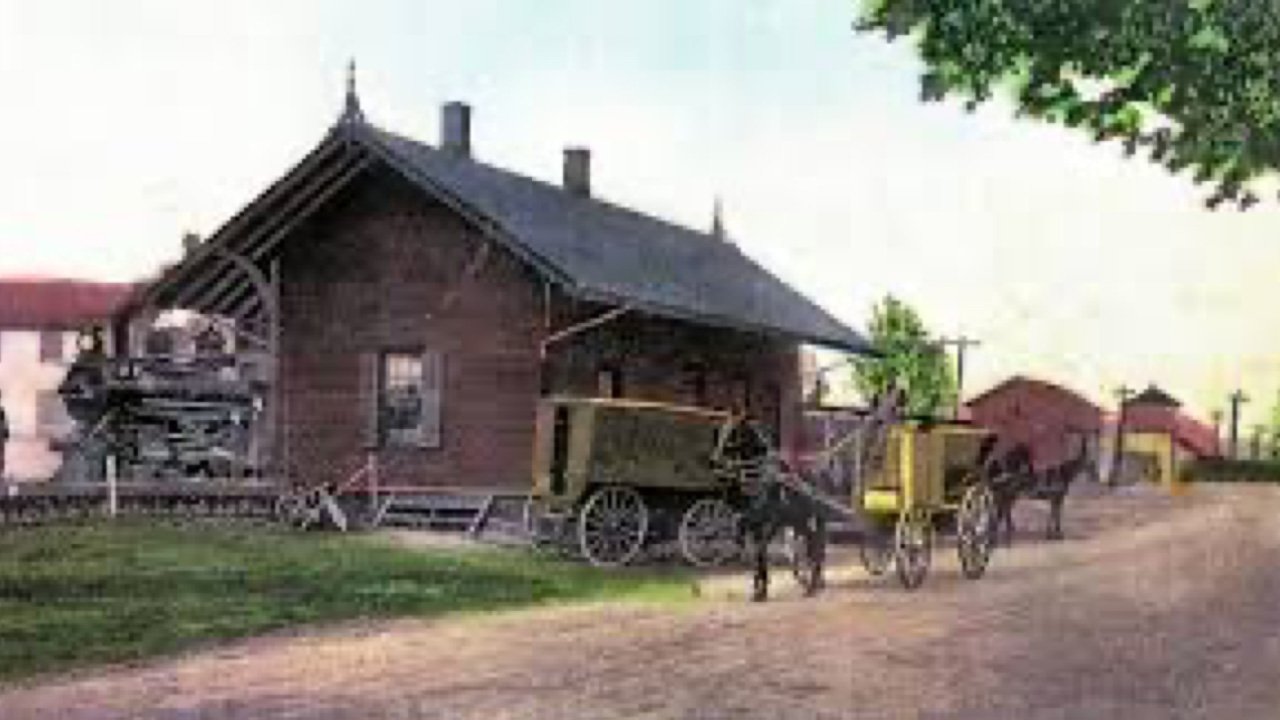
SCROLL BELOW FOR A MAP OF ALL THE STOPS ON THE TOUR.
SCROLL BELOW FOR TEXT OF THIS STOP
-
Long Island Rail Road Station
1910
200 Railroad Avenue
Narrator: John Maloney [with a slight Irish brogue], voiced by Colin Palmer
Hello, this is John Maloney. I grew up just around the corner over on Third Street. My dad, Patrick Maloney, and mother, Mary, were both Irish immigrants, came over during the Irish Potato Famine. He was only 15 when he arrived. In fact, most of that neighborhood was Irish at the time – names like Flannagan, Walsh, Brown. I lived my entire life on Third Street in the house that my father had built. I became a painter and a wallpaper hanger. In fact, when they built the new Suffolk Theater on Main Street in 1933, guess who did the painting and wall papering?
As a boy, I loved to wander over here to watch all the trains. Would you believe that there were at least 15 railroad sidings here? This was a really busy place, not only passengers, but also freight. In fact, Riverhead was one of the busiest freight depots on the entire Long Island Rail Road system. You probably know that this is the Main Line of the Long Island system. It was the first built, way back in 1844, part of a short cut to get to Boston.
You won’t believe there were six trains a day from Riverhead to the City in 1910. And I know you won’t believe that there was a Friday night special that made it to Riverhead in only an hour-and-a-half! There was even a daily train from here to Sag Harbor and Amagansett on the South Fork.
When I was growing up, there was an old station here. The people of Riverhead didn’t think it was worthy of their up-and-coming town. For years they badgered the railroad to build a new station. It finally happened in 1910. Naturally it was built by Irish workers. Look at this great photo.
Like many stations the LIRR built in that era, the gambrel-roofed structure was intended to pay homage to the Dutch heritage so important in the western part of Long Island.
Notice the quadrant windows in the gable ends and the “Flemish bond” brickwork (with every-other brick laid endwise) in every fourth course. This pattern originated in the western part of the “Low Countries” known as Flanders, for which the area of Southampton just across Peconic Bay from Riverhead is named. [photo 8] Peek in the windows to see the “Mission” paneled waiting room. The County Review, which helped in the campaign for the “elegant new station,” bragged at the time that there was “no better station on the entire system.
Now, the station is not much used, but if you are interested in railroad history, you should wander over to the Long Island Railroad Museum just the other side of the tracks on Griffing Avenue.










